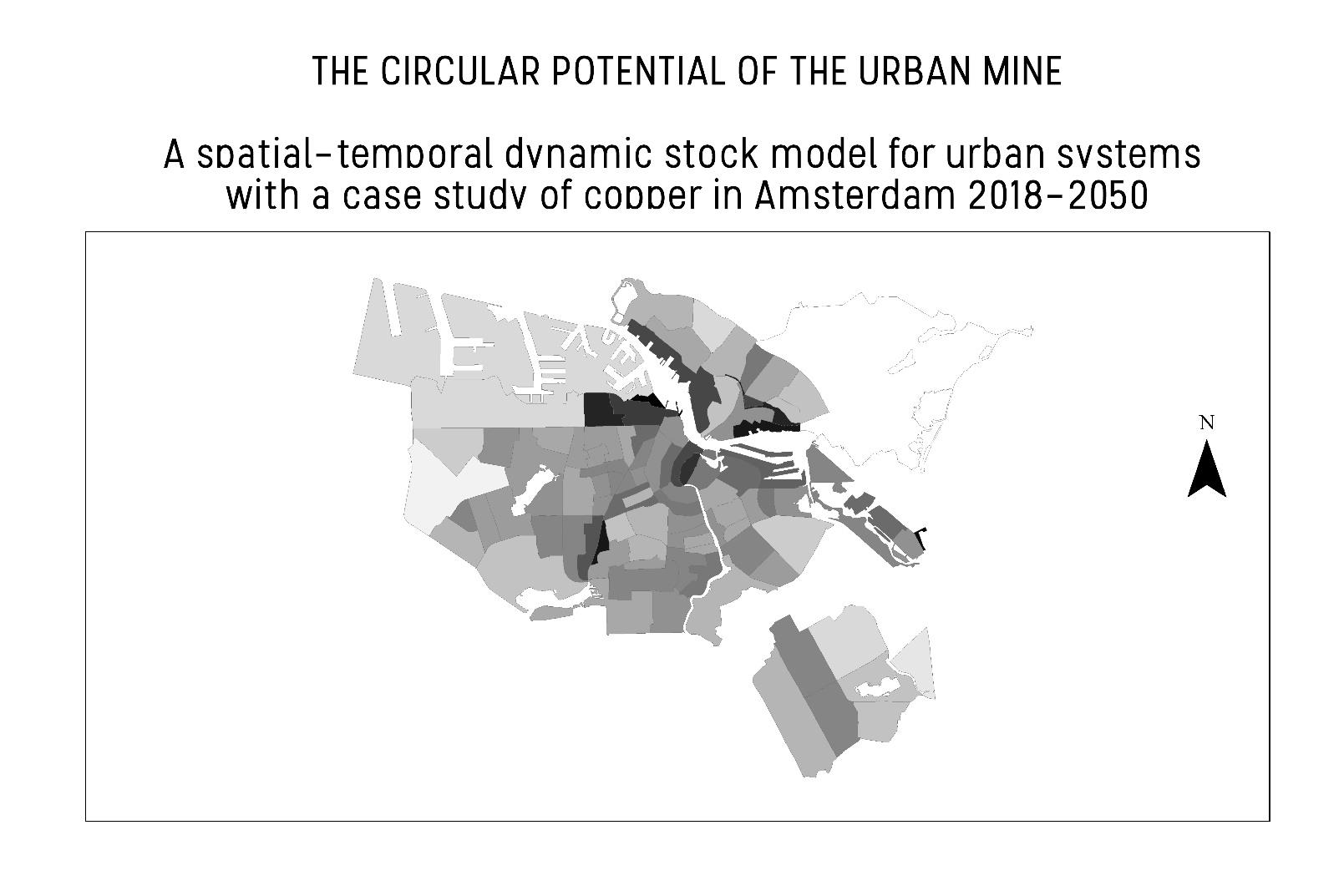The circular potential of the urban mine: A spatial-temporal dynamic stock model for urban systems with a case study of copper in Amsterdam
Student: Sabine de Haes
Mentors: Esther van der Voet, Arjan van Timmeren
Program: MSc Urbanism
Graduation date: 18-06-2018
Abstract
Large material flows are extracted from natural mines in the earth’s crust and moved and stored in anthropogenic environments. Extraction processes from natural mines are often harmful for the environment and can cause material scarcity. At the same time governments are formulating ambitions to increase circularity in cities. For these reasons the concept urban mining is becoming increasingly interesting: the process of analysing and recovering or reusing materials from the city. There is still a lot to explore before steps can be taken to implement urban mining. For a lot of materials, data is missing on quantities and precise locations. This research proposes a method to localize material quantities, for estimating the potential of the material mine of a city. This is done with a case study for copper stock dynamics in Amsterdam between 2018 and 2050. Material Flow Analyses up until now seem to have been effective for analysing material stocks and flows in cities. Geographic Information Systems are used for all kinds of geographic research. With a combination of the two, stock dynamics of copper between 2018 and 2050 are modelled on a detailed level. The copper stocks are distinguished on basis of use in the city: buildings, infrastructure, transportation and appliances. Firstly, the current stock density is estimated, resulting in an amount of 150 kilograms of copper per capita, and visualised in a density map. The map demonstrates a high copper density in the centre, and a low density the further away from the centre. Then, the future stock dynamics are modelled. The resulting stock comes down to about 167 kilograms per capita. An energy transition scenario is modelled on top of the model, to gain insights of the impact of the energy transition on the copper stock. This led to an increase of 7%. The stock expands, mainly to areas in around the centre. Several socio-economic variables seem to correlate with the distribution of the copper mine: floor area density and projected population growth. The outcome of the model can be useful for improving logistics of secondary material outflows. The outcome can also support decision making for policy measures that influence the demand of materials that are potentially scarce (such as subsidizing of solar panels). The method was labour and data intensive, python knowledge would be recommended in the future. Another important recommendation is to start a collaboration for a sound database that can be used for prospecting urban mines.
Subject
Urban Mining
Circular Economy
urban metabolism
Material Flow Analysis
Geographic Information Systems
dynamic stock model

